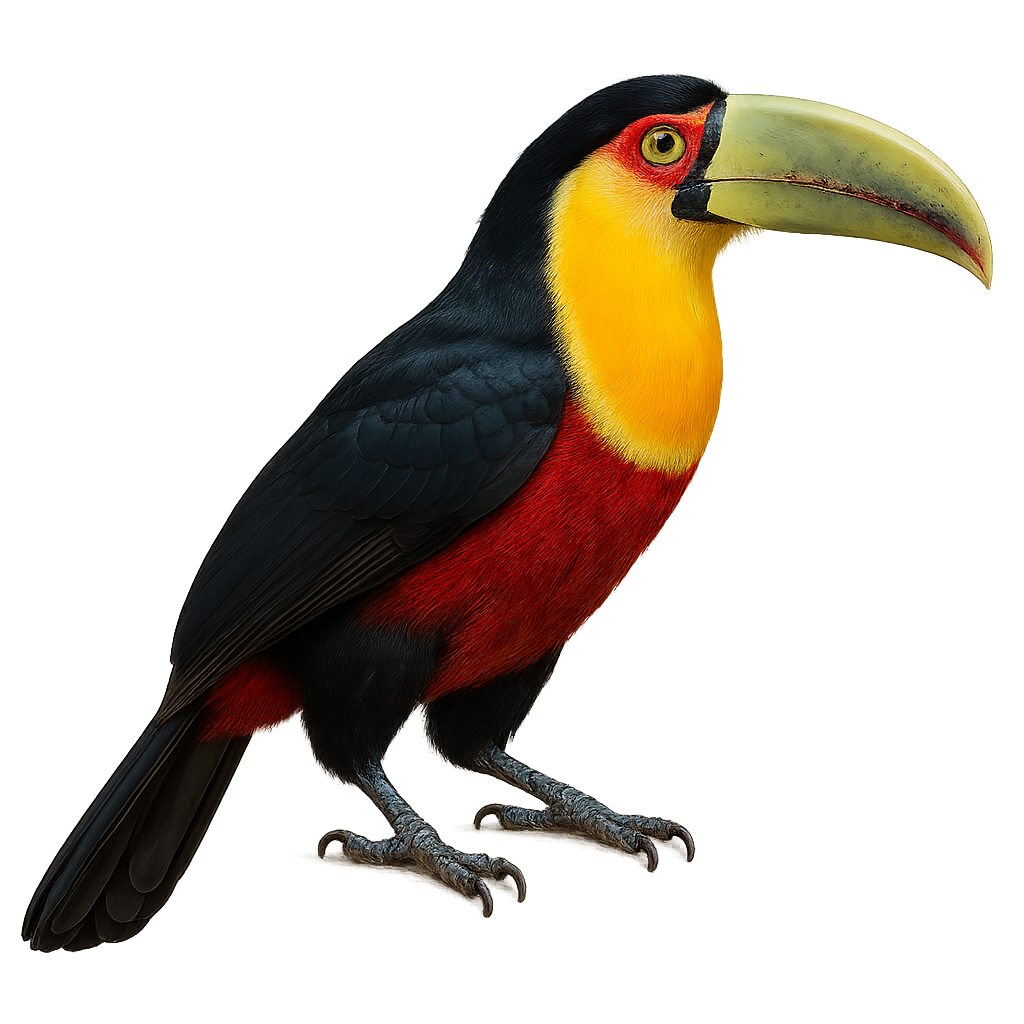Your wildlife photography guide.
Explore the red-breasted toucan in detail, study its behavior, prepare your shots.
Where to observe and photograph the red-breasted toucan in the wild
Learn where and when to spot the red-breasted toucan in the wild, how to identify the species based on distinctive features, and what natural environments it inhabits. The WildlifePhotographer app offers tailored photography tips that reflect the red-breasted toucan’s behavior, helping you capture better wildlife images. Explore the full species profile for key information including description, habitat, active periods, and approach techniques.
Red-breasted Toucan
Scientific name: Ramphastos dicolorus

IUCN Status: Least concern
Family: RAMPHASTIDAE
Group: Birds
Sensitivity to human approach: Suspicious
Minimum approach distance: 10 m
Courtship display: September to October
Incubation: 16-18 jours
Hatchings: September to November
Habitat:
Tropical forests, rainforests, forest edges
Activity period :
Primarily active during the day, with peak activity in the morning and late afternoon.
Identification and description:
The Red-breasted Toucan, or Ramphastos dicolorus, is a colorful bird native to the tropical forests of South America. It is known for its vibrant plumage, featuring a bright red breast, green back, and multicolored bill. Measuring about 40 to 46 cm in length, it is a prominent member of the Ramphastidae family. This toucan is primarily frugivorous but also feeds on insects and small vertebrates. It plays a crucial role in seed dispersal, aiding forest regeneration. Social in nature, it often lives in small groups and uses its bill skillfully to handle fruits. Although its habitat is threatened by deforestation, it is currently classified as "least concern" by the IUCN.
Recommended lens:
400mm – adjust based on distance, desired framing (portrait or habitat), and approach conditions.
Photography tips:
To photograph the Red-breasted Toucan, it is advisable to use a 400mm lens or longer to capture detailed images without disturbing the bird. Look for it in tropical forests or their edges, where it is often active during the day. Be patient and discreet, as this bird can be suspicious. Use a tripod to stabilize your camera and wait for the right moment to capture its colorful plumage and natural behavior.
The WildlifePhotographer App is coming soon!
Be the first to explore the best nature spots, track rutting seasons, log your observations, and observe more wildlife.
Already 1 439 wildlife lovers subscribed worldwide

